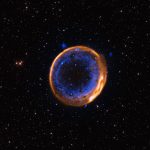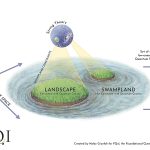Old Hubble Space Telescope photos unlock the secret of a rogue planet
Astronomers have achieved a first in exoplanet hunting by using the Hubble Space Telescope images to investigate a mysterious event that could reveal the...
A star detonated as a supernova… twice
All supernovae are massively energetic stellar explosions.
The classic supernovae are massive stars that explode near the end of their lives, leaving behind either a...
Astronomers discover planets with tilted orbits and bizarre timing
A surprising new discovery has come from a fresh look at data from NASA’s retired Kepler Space Telescope.
Astronomers have found that the KOI-134 system,...
High-speed gas clouds fuel star formation in depleted galaxies
Galaxies have an overall internal motion called disk velocity. It's how gas, dust, and stars move around the galactic center.
It's not a single value...
In the search for Earth-like worlds, we should probably focus on red dwarfs
When astronomers first discovered exoplanets, they found massive ones orbiting large stars.
The technology to detect smaller planets around low-mass, dim red dwarfs took time...
Scientists discover missing matter in the universe
The vast majority of matter in the universe is dark—it is entirely invisible and detected only through its gravitational effects.
Ordinary matter—everything from protons to...
How a pizza-sized robot and VR could change lunar missions
Someday, robots might crawl across the moon helping astronauts build science labs and even future homes—and some of the early work to make that...
Scientists capture the universe in motion
After years of preparation, U.K. astronomers are celebrating a major milestone as the Vera C. Rubin Observatory reveals its first dazzling images of the...
The space metal that shrinks with heat and helps us find new worlds
NASA is getting closer to building the powerful telescopes needed to find Earth-like planets beyond our solar system, thanks to a surprising new material...
A new twist in string theory could solve a cosmic mystery
For decades, string theory has promised to be the ultimate explanation for how our universe works.
In this theory, all matter and forces are made...










